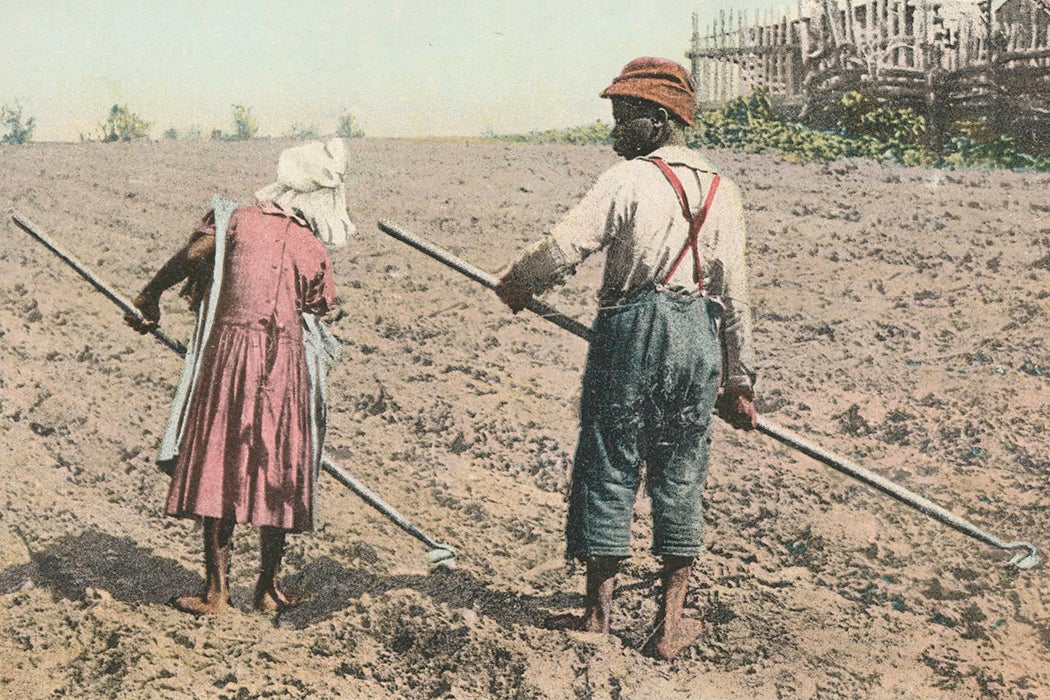Living in the American South, the hum of growth and progress is impossible to ignore. Over the past decade, the region has seen new skylines take form, highways widen, and small towns become bustling metropolises. Cities across the South are scrambling to accommodate the new influx of migration from northern States and coastal cities, where the cost-of-living crisis has become unbearable: $5 per gallon gas prices, home values starting well over $1M, and fresh produce becoming a treat only the ultra-rich can afford. The South, particularly Sunbelt states like North Carolina, Georgia, and Texas, are becoming attractive options for soon-to-be homeowners looking to escape rising living costs.
As construction balloons and traffic snarls once-rural roads across the South, a quiet crisis unfolds: the land of Black families, often passed down since emancipation, is being threatened again, this time by development pressure and speculation. The land tenure of Black landowners has survived physical, social and legislative attack. Once again, their claim is under threat as the “value” of their properties booms. This crisis, however, is not uniquely American. Across the Atlantic, in the ancestral homelands of many heirs’ property owners, including Ghana, lands once protected by deep-rooted customary tenure systems are also being fragmented and lost as cities expand. The parallel is clear: from the US South to West Africa, the dispossession of Ghanaian and Black American families from their lands is not an isolated incident or coincidental but part of a larger global pattern. At its core, these communities experience a shared struggle over control of the land, how ownership is defined, and whose claims are honored or erased.
In Ghana, the impact of rapid urbanization is shaking once-rural localities. The peri-urbanization of the region surrounding Ghana’s most populous cities, Accra and Kumasi, began in the early twenty-first century. As Kojo Sebastian Amanor explains, customary land tenure practices began buckling under the weight of new realities of land commodification, fragmented ownership models, and the resulting land scarcity. Customarily, transfer of property and stewardship has been a deeply social and familial act; this continues to be true in what are termed/deemed “less desirable” rural localities. However, with the rise of cities like Tamale, Bolgatanga, and Wa, the newfound desirability of these burgeoning cities is redefining geographic desirability. Though in Ghana’s case much of the “frontier” continues to be agricultural, the outcome is the same: fragmentation of familial land ownership and land loss.
The initial loss of communal land places those dispossessed into precarity. Land-dispossessed individuals can’t compete financially with new buyers, and, with the disadvantage of losing their starting inheritance, many fall to the fringes of rural society or move to urban centers to look for employment. Some have called this predatory migration a “national disease” of displaced poor and marginalized families. Across the continent young people are recognizing land dispossession and the subsequent displacement of youth into expensive cities as an international struggle.
The crisis in Ghana parallels the struggle experienced by Afro-descended communities across the Atlantic, and as African peoples across the continent are realizing a shared struggle, Black Americans are starting to think in terms of global solidarity. Just as Ghanaian families have found customary land stewardship strained under the pressure of commodification and urban expansion, Black American families have seen their landholdings eroded by legal structures ill-suited to protect communal and oral inheritance. Nowhere is this more evident than in the issue of heirs’ property, a legal limbo where land passed down without formal deeds or wills becomes vulnerable to forced sales and speculative acquisition.
In the US, the story of land dispossession took a different legal and historical shape, but the outcome is strikingly similar: inherited land, once a symbol of freedom and generational wealth, has been gradually stripped from Black American families. As scholar Alice Reznickova explains, in the 1920s, the height of Black farmland ownership, African American farmers made up one out of every seven farmers and amassed a total of 15.5 million acres of land. This represented a remarkable achievement in the decades following emancipation, as formerly enslaved people and their descendants built economic sovereignty through land ownership. Today, however, Black Americans make up only one out of every seventy-two farmers, with Black-owned farmland declining by 80 percent since the 1920s.
More to Explore
Hoe History: Complex and Knotted
Post-emancipation, newly freed Black Americans acquired land through a variety of channels, such as the Freedmen’s Bureau initiatives, private purchases, and informal arrangements with former plantation owners. In many cases, the lack of access to legal and financial services (whether due to cost or due to justified distrust of the legal system) meant that land was transferred to the next generation without deeds or wills. Heirs were often instructed by their ancestors that they owned “everything from the rock to the creek,” creating jagged borders around property that were difficult to make legible in delineating property boundaries. According to intestate succession laws, the children and grandchildren of a landowner hold undivided interests in one property, which makes decision-making on the land difficult. In many states, predatory developers can still approach land held by multiple heirs and attempt to force a sale of the land. It takes only one heir (out of potentially hundreds of heirs who have an interest in the land) to force a sale and partition the land in court. This dynamic can lead to significant land and wealth loss.
Weekly Newsletter
Moreover, as Reznickova emphasizes, even when heirs’ property is stewarded by the family as a collective, the stewards are often ineligible to participate in federal loan and grant programs or ecosystem services markets where sustainable ways of deriving revenue are possible. It’s not just land that’s held by heirs’ property; homes, farms, buildings, and infrastructure can all be held by heirs. In fact, as Malcom B. Meyer observes, this can lead to unexpected consequences: Following Hurricane Katrina, heirs’ property owners found it difficult to receive federal emergency management funds due to their lack of clear title to their property.
Isolated struggles create isolated resistance. A single heir in a forced sale and the grandchild leaving the homelands they always knew live worlds apart. However, their broken tenure connects them across geographies. The impact of urbanization is reaching new corners of the world, shifting desirability and increasing vulnerability for African and Afro-descended peoples globally. Poet and scholar Clint Smith, in How the Word is Passed, writes that land dispossession is central to “the intergenerational poverty that plagues many formerly enslaved communities nearly a century and a half after emancipation.” The same can be said across the Atlantic; decades after emancipation from colonial rule, landless descendants fall into new cycles of poverty. As contemporary land-ownership systems add pressure to oral tradition, new models of global collectivity and solidarity must be realized.
Support JSTOR Daily! Join our membership program on Patreon today.








